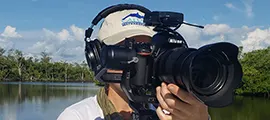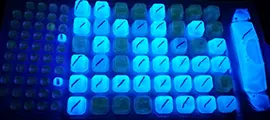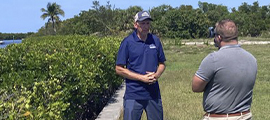Recently, I was asked to speak on The Chamber of Southwest Florida’s water quality panel. The host, Peter Busch of NBC-2, asked each panelist to rate the current state of our water quality on a scale of 1-10. The responses from those directly responsible for water management were in the “7” range. Without hesitation, I responded honestly with a “4.” Based on what I am currently seeing across our region and compared to the water quality I have observed here over my lifetime, we are witnessing a steady and at times, shocking, decline.

Capt. Codty Pierce
Calusa Waterkeeper
Our estuary environment is resilient. But increasingly often, severe weather impacts are highlighting the accumulating pollution and ecological changes we face. That happened this month with a harmful algal bloom and fish kill in Matlacha Pass and San Carlos Bay following our area’s impact from Tropical Storm Debby. Our area received a large amount of rainfall, and the coastal areas were inundated with a significant storm surge.

We first responded to the fish kill in Matlacha Pass on August 13, 2024 | More photos

View more of our aerial observations of Matlacha Pass from August 14 | Photo gallery
The fish kill we responded to in Matlacha Pass this month was due to hypoxic conditions. With an acute lack of dissolved oxygen in the water, the fish simply can’t breathe. The are a multitude of factors that contribute to this event:
- Decades of nutrient pollution from the Caloosahatchee watershed including Lake O releases, removing detainment barriers such as the Ceitus barrier in Cape Coral, and Lee County’s runaway urban growth. This nutrient pollution has slowly changed conditions in the warm, shallow waters of places like Matlacha Pass and Estero Bay. We have long been witnessing the seagrass habitats diminish and become increasingly dominated by a wide coverage of macroalgae. These species block out sunlight and can actually uproot seagrasses as they eventually detach from the bottom.
- Dinoflagellate activity in Matlacha Pass was found to be very high, fueled by excess nutrients just as the algal blooms are. The activity of both families of species reduce the available oxygen in the water, as do the record-breaking warm temperatures we’ve been experiencing.
- The wind and wave action from Debby accelerated the detachment of the macroalgae (caulerpa, dapis) which are often found in wooly-looking mats. For several years running now we have documented how the decay of those mats cause the milky-stained waters and rotten egg smell as those materials breakdown into compounds such as hydrogen sulfide.
- Stormwater releases at the Franklin Locks (S-79) peaked around 12,000 CFS (Cubic feet per second) during Debby. This is about 6x the threshold that marks harmful discharge impacts to the Caloosahatchee estuary. While it is important to note that discharges from Lake O at S-77 were at 0, what is often described as “local” stormwater run-off in reality is hundreds of thousands of acres of watershed largely dominated by agricultural land, starting at Moore Haven and draining and flashed-off towards the Caloosahatchee River and Estuary.
- Storm surge and rainfall stormwater from Debby washed sediments and years of decaying foliage (from flora damaged in Ian) out of the mangrove fringes as the high water levels receded. The ensuing debris and turbidity from this stormwater, surge and some large-scale marine construction activity all contributed to terrible looking conditions in our coastal watershed.

























